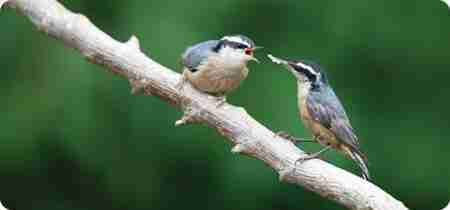In this highly fascinating exploration, “Comparing Hunting Techniques: Hawks vs Falcons”, you’ll be treated to a detailed comparison between the unique techniques used by hawks and falcons in their hunting endeavor.
You will trace through the mysterious world of these two magnificent raptors, focusing heavily on their individual behaviors, their unique methods of capturing their prey, and their survival strategies in the wild. This journey through their tactical approach to hunting provides an insightful view into the fascinating world of raptors.
So, prepare to open your understanding to the intriguing realm of these extraordinary birds!
Description of Hawks and Falcons
Birds of prey, also known as raptors, are bird species that primarily hunt and feed on vertebrates, usually smaller animals. This group includes eagles, ospreys, vultures, and of course, hawks and falcons. Both renowned for their hunting prowess, hawks and falcons dominate the sky in their respective areas, both in air command and predatory prowess. Both are distinctly different and yet alike, a juxtaposition that’s evident in their habitat, appearance, hunting techniques, and impact on the environment.
Understanding Hawks: Species and Distribution
Hawks are one of the most recognized birds of prey, classified scientifically under the family Accipitridae. There are more than 270 species of hawks worldwide, with great variation in size and habitat. They are distributed broadly across all continents except Antarctica, with their largest diversity seen in tropical rainforests.
Understanding Falcons: Species and Distribution
Falcons, on the other hand, belong to the family Falconidae. Comprising around 40 species, they too have a global distribution, but they traditionally favor more open habitats compared to hawks. Despite the lower species count in comparison to hawks, falcons still exhibit considerable species diversity and variations in size and behavior.
Physical Characteristics of Hawks
Hawks are typically larger and have broader wings, with a more robust body build than their falcon counterparts. They have a relatively shorter, rounded wing shape, which helps them maneuver in densely wooded areas. Their beaks are shorter but razor sharp, aimed to tear through the flesh of their prey. Plus, their talons are thicker and powerful, making them ideal for capturing and holding onto their prey.
Physical Characteristics of Falcons
Falcons are generally smaller, sleeker, and more streamlined than hawks. They have long, pointed wings, ideal for fast, agile flight in open habitats. Their beaks are pointed, with a notable ‘tooth’ like projection for killing prey more effectively, and their talons are long and slim, designed for hitting and stunning their prey in mid-air rather than seizing it.
Senses and Physical Capabilities
Visual Acuity of Hawks
Hawks are known for their exceptional vision. Their eyes are large relative to their body size, enabling them to spot their prey from great heights. Their eyes are designed to focus on an object with intense accuracy, making hunting easier.
Visual Acuity of Falcons
Falcons likewise have excellent vision – in fact, amongst the sharpest in the animal kingdom. They are able to spot their prey from a distance of several kilometers, a feat made possible by having a high number of photoreceptor cells in the eye.
Speed and Agility of Hawks
Hawks are not the fastest birds in the sky, but they are certainly agile. With their broad wings and short tail, they’re able to maneuver adeptly through a variety of terrains, making sudden directional changes to chase after elusive prey.
Speed and Agility of Falcons
Falcons are renowned for their speed. In fact, the Peregrine falcon holds the title for being the fastest bird – and indeed the fastest animal on Earth. During a stoop (high-speed dive), it can reach speeds over 240 miles per hour. Their long slender wings and streamlined body shape make them incredibly agile flyers capable of high-speed maneuvers to capture elusive prey.

Prey Selection and Hunting Grounds
Common Prey Types for Hawks
The diet of a hawk largely depends on the specific hawk species and its habitat. However, most hawks feed on small mammals, birds, and reptiles. Some species have specialized diets, like fish or insects.
Common Prey Types for Falcons
Falcons generally feed on other birds, making them exceptional avian hunters. Falcons are also known to eat small mammals, and larger falcon species have been known to catch fish.
Choice of Hunting Terrain for Hawks
Hawks tend to favor forested areas or nearby open grounds, taking advantage of their ability to maneuver between trees. They’re also known to hunt in grasslands and deserts, and some species are equally at home in urban areas.
Choice of Hunting Terrain for Falcons
Falcons ordinarily prefer open spaces like deserts and grasslands for hunting. The wide, open spaces accommodate their high-speed flight and stoop to capture prey. Some species, like the Peregrine falcon, have adapted to urban environments, using tall buildings as vantage points.



Hunting Techniques of Hawks
Stooping Technique
Stooping is a hunting method employed by hawks where the bird soars to a great height and then dives steeply towards its prey. It’s a strategic technique designed to surprise and swiftly subdue the prey.
Perch Hunting Technique
Hawks also use a hunting technique known as perch hunting. In perch hunting, a hawk will most often station itself in a high location and watch for prey activity. Once the prey is spotted, the hawk swoops down onto the unsuspecting creature.
Hovering Technique
Despite its size, hawks have been known to hover in mid-air, holding their position against the wind while scanning for prey. Once the prey is spotted, the hawk drops onto it with stunning accuracy.
Slide Diving Technique
Hawks may also use the slide diving technique where they glide down the sides of hills or slopes in semi-open areas to capture ground-dwelling animals unawares.



Hunting Techniques of Falcons
Stooping Technique
Falcons, particularly Peregrine falcons, are perhaps most famous for their use of the stooping technique. They soar to a great height and then dive at extraordinary speeds onto their prey. The sheer force and speed of the attack often kills the prey instantly.
Perch Hunting Technique
Like hawks, many falcon species also employ perch hunting. Falcons traditionally prefer taller perches like trees or cliff edges to spot their prey from a distance.
Hovering Technique
Some species of Falcons including the kestrel can often be seen hovering in mid-air, maintaining their position against the wind, scanning the ground below for potential prey.
Tail-chase Technique
Falcons employ a unique hunting technique known as the tail-chase. In this method, they pursue their prey in flight, often following the prey’s turns and twists and eventually overpowering it with their superior speed and agility.
Effectiveness and Success Rates in Hunting
Hunting Success Rate of Hawks
With their diverse range of hunting techniques and exceptional vision, hawks possess a high success rate when hunting. However, exact figures can vary greatly depending on the species, age, and habitat of the hawk.
Hunting Success Rate of Falcons
Falcons, particularly Peregrine falcons, are famed for their hunting success rate, mostly attributed to their sensational speed but also their effective hunting techniques. Yet, as with hawks, success rates in falcons can depend on factors like species and age.
Factors influencing Success Rate in Hawk Hunting
Hunting success in hawks can be influenced by several factors. Environmental elements like weather conditions, terrain, and prey abundance can affect success rates, as can physiological factors like age, health, size of the hawk, and experience.
Factors Influencing Success Rate in Falcon Hunting
Similar to hawks, environmental variables, including prey availability and weather conditions, can sway the hunting success rate of falcons. In addition, the falcon’s health, age, size, and experience level can significantly impact its hunting efficiency.
Adaptations for Hunting
Physical Adaptations of Hawks for Hunting
Hawks possess several physical adaptations for hunting. Their large, forward-facing eyes provide binocular vision and accurate depth perception, critical for spotting and focusing on prey. They have sharp and curved beaks for tearing flesh; and their powerful talons enable them to seize and hold onto their prey.
Behavioral Adaptations of Hawks for Hunting
Hawks exhibit numerous behavioral adaptations for hunting. They are patient hunters, often waiting silently in perch to spot their prey. Hawks can also alter their hunting techniques based on their terrain and the type of prey they are hunting.
Physical Adaptations of Falcons for Hunting
Falcons’ long, pointed wings and streamlined bodies are adapted for fast flight, crucial in chasing down prey in the air. Their sharp, pointed beaks, unique ‘tooth’ like structures, and long, thin talons are all well adapted for inflicting a killing blow on their prey.
Behavioral Adaptations of Falcons for Hunting
Falcons are persistent hunters, often utilizing tail-chases for more elusive prey. They can change their hunting strategy according to the behavior and size of the prey and have been seen to hunt cooperatively to take down larger prey.

Impact of Environmental Changes on Hunting
How Environmental Changes Impact Hawk’s Hunting
Changing environmental conditions can greatly impact hawks. Deforestation, for instance, can demolish their nesting sites and hunting grounds, further leading to a dwindling prey population. Changes in weather patterns also can affect migration, breeding, and hunting activity of Hawks.
How Environmental Changes Impact Falcon’s Hunting
Falcons, too, are susceptible to environmental changes. Habitat destruction, shifts in prey populations due to changing climates, and human disturbance can all negatively affect falcon populations and hunting behaviors.
Adaptations to Environmental Changes: Hawks vs Falcons
Both falcons and hawks show considerable resilience in the face of environmental changes thanks to their adaptable nature. Hawks, for example, have been known to change hunting strategies to focus more on urban prey, while falcons, particularly Peregrine falcons, have taken to nesting on skyscrapers and other tall buildings.
Threats and Conservation
Threats to Hawks and Their Hunting Techniques
Hawks face numerous threats including habitat loss due to deforestation and urbanization, being killed for sport or because they’re deemed a nuisance, and indirect threats like exposure to pesticides and other toxins. These factors can influence their health, population numbers, and subtly alter their hunting techniques and success.
Conservation Strategies for Hawks
Conservation strategies for hawks typically involve habitat protection and restoration, educational programs to raise awareness of their benefits to the ecosystem, and legal protection to guard against direct harm. In some cases, captive breeding and reintroduction programs are also implemented.
Threats to Falcons and Their Hunting Techniques
Similar to hawks, falcons face threats from habitat destruction, persecution by humans, and contamination from pesticides and other toxins. Changes in the available prey due to environmental changes can also impact their hunting techniques and success.
Conservation Strategies for Falcons
Conservation efforts for falcons are generally similar to those used for hawks. These can include habitat conservation, creating nesting sites, implementing legal protections, and raising public awareness. Successful programs like the Peregrine Falcon recovery project in North America have shown the effectiveness of concentrated efforts in conservation.







Comparative Analysis: Hawks vs Falcons
Comparison of Hunting Techniques Between Hawks and Falcons
While both hawks and falcons are effective predators, their hunting techniques significantly vary. Hawks use their ability to maneuver effectively in wooded areas and their strong talons to seize and hold prey. In contrast, falcons use their speed and agility in open spaces to overpower prey in the air.
Comparison of Hunting Success Rates Between Hawks and Falcons
Though both hawks and falcons are successful hunters, falcons, particularly the Peregrine falcon, are often considered more successful due to their ability to hunt at high speeds and their effective killing technique.
Strengths and Weaknesses: Hawks vs Falcons
Hawks’ strength lies in their fierce tenacity, powerful talons, and ability to maneuver through montane and forested areas. Their broad-spectrum diet is also an advantage. However, their reliance on these habitats is a weakness in the face of habitat destruction. Falcons’ strength lies in their incredible speed, precision, and specialized hunting techniques. However, their dependence on open environments and avian prey could be a potential weakness in changing environmental conditions.
In conclusion, both hawks and falcons are exceptional hunters, each adapted superbly to their style of hunting and habitats. Despite sharing many similarities as birds of prey, their differences in hunting techniques, physical characteristics, and adaptations illustrate the beautiful diversity in nature’s design.



